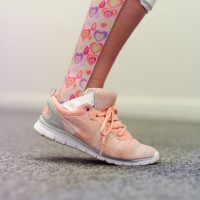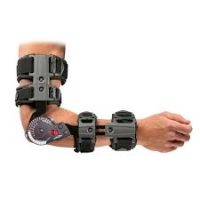Enhance Your Stroke Rehabilitation with Specialized Orthotic Management by expert orthotics consultant
Stroke Rehabilitation
Stroke is one of the leading cause of death in the India and is the number one cause of serious adult disability. Stroke risk increases with age, but strokes can — and do — occur at any age. The good news is that most strokes can be prevented, and there are steps you can take that may lower your chance of having a stroke.

What is a Stroke?
A stroke happens when there’s a change in how blood flows through the brain. Blood brings oxygen and nutrients to brain cells. If blood can’t flow to a part of the brain, cells that do not receive enough oxygen suffer and eventually die.
The Major Challange
One major challenge faced by stroke patients is regaining motor control and function in the affected limbs, requiring dedicated rehabilitation efforts. Another significant challenge is overcoming muscle weakness and spasticity, which can impede movement and hinder daily activities.
Rehabmitra team approach
RehabMitra’s groundbreaking approach to stroke rehabilitation revolves around unbiased consultation, regenerating hope through tailored therapies, advanced robotic assistance, and personalized care to optimize recovery and regain independence.
Know the signs of stroke
- Sudden numbness or weakness in the face, arm, or leg — especially on one side of the body
- Sudden confusion, trouble speaking, or understanding speech
- Sudden problems seeing in one eye or both eyes
- Sudden dizziness, loss of balance or coordination, or trouble walking
- Sudden severe headache with no known cause
Other danger signs that may occur include double vision, drowsiness, and nausea or vomiting. Stroke strikes fast. Responding quickly when you notice any of these symptoms is key.
Types of stroke:
Ischemic stroke: This is the most common stroke and happens when a blood clot or the narrowing of a blood vessel (artery) reduces blood flow to the brain. This keeps blood from flowing into other parts of the brain and stops oxygen and nutrients from reaching brain cells.
Hemorrhagic stroke: This is the second major kind of stroke. It’s marked by a burst blood vessel that causes blood to leak into or around the brain. This break reduces delivery of oxygen and nutrients to brain cells and exposes the brain tissue to toxic substances that may cause the cells to die. The bleeding also increases pressure inside the skull that can compress brain tissue and cause damage.
What happens after a stroke?
A stroke can cause a variety of health problems. How a stroke affects a person depends on which part of the brain is damaged. Someone who has had a stroke might be paralyzed or have weakness, usually on one side of the body. He or she might have trouble speaking or using words. There could be swallowing problems, pain, or numbness.
Stroke may cause problems with thinking, awareness, attention, learning, judgment, and memory. Fatigue after a stroke is common. Someone who has had a stroke might feel depressed or find it hard to control emotions. This is more than general sadness: It’s a serious mood disorder that may need treatment. If depression is a concern, talk to a doctor as soon as possible.
There are many different ways to help people get better after a stroke. Many treatments start in the hospital and continue at home. By supporting the brain’s ability to rewire some of the circuits lost after a stroke — a process called neuroplasticity — rehabilitation therapy may lead to some improved function over months or years.
Physical therapy:
Helps a person relearn simple motor activities such as walking, sitting, standing, lying down, and the process of switching from one type of movement to another.
Speech therapy:
Helps a person relearn language and speaking skills or learn other forms of communication. With time and patience, a stroke survivor may be able to regain some, and sometimes all, language and speaking abilities.
Occupational therapy:
Helps a person relearn everyday activities, such as eating, drinking, and swallowing; bathing and dressing; cooking; reading and writing; and using the toilet. Using exercise and training activities, occupational therapists focus on helping a person become independent or semi-independent
STROKE REHABILITATION
Orthotic Management for Stroke
Elevate your stroke recovery journey with our tailored orthotic management, promoting improved mobility and functional independence. Experience the transformative benefits of our stroke-specific orthotic solutions, designed to optimize your rehabilitation outcomes

ANKLE FOOT ORTHOSIS
AFO & KAFO
AFOs are used to address foot drop, a common problem after a stroke. They provide support and prevent the foot from dragging while walking, improving stability and preventing tripping

HAND & WRIST BRACE
CONTRACTURE PREVENTION
These devices are designed to support and position the hand and wrist, promoting functional use and preventing contractures. They can be customized to meet individual needs and may include splints or braces.

KNEE ORTHOSIS
STABILIZATION & CONTROL
Knee orthoses are used to stabilize and control knee movement. They can be beneficial for stroke survivors with weakness or instability in the knee joint, providing support during walking or standing.

DYNAMIC ELBOW ORTHOSIS
FUNCTIONAL BRACING
Dynamic elbow orthoses assist with elbow extension by applying gentle force to stretch and strengthen the affected muscles. They can help improve arm function and range of motion.

SHOULDER SLING/ORTHOSIS
MAINTAIN POSTURE
These devices support the shoulder and arm, preventing shoulder subluxation (partial dislocation) and promoting proper alignment. They can provide stability and reduce pain during daily activities.

TRUNK ORTHOSIS
STABILIZATION & CONTROL
Trunk orthoses are used to support and stabilize the trunk, assisting with sitting balance and posture. They can help individuals with trunk weakness or asymmetry to maintain an upright position.